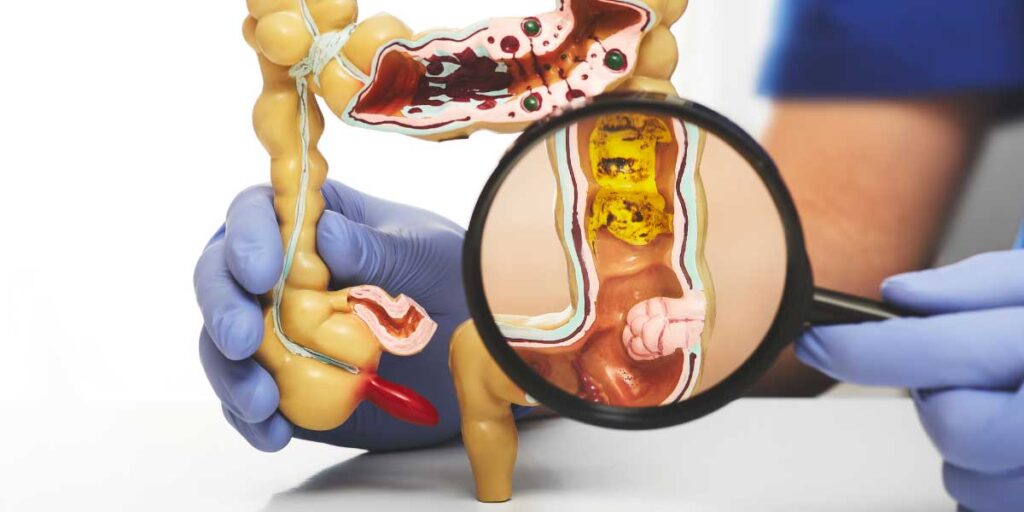Malaysia is food heaven, and good food is never enough. Due to the multicultural heritage, people enjoy all kinds of cuisines from different races. Thus, food plays a significant role to unite people together. Yet, some foods are too good to consume all the time.
Body health is heavily dependent on the daily diet. Unfortunately, not all Malaysian’s food is suitable for daily intake. Such as nasi kandar, nasi lemak, char kueh teow, etc. Besides food, lifestyle is another crucial factor that causes harm to our health.
Having good food is comforting, but people need to be mindful. According to this news, colon cancer is one of the fatal cancers in Malaysia. Colon cancer ranks second among males; third among females of the most common cancer.
However, people can detect cancer in an early stage by running tests.
Let’s find out.

What is a colonoscopy?
Colonoscopy is the test for assessing the symptoms of colon cancer.
However, it does not necessarily indicate a cancerous disease. It could be some inflammations or discomfort. Hence, colonoscopy can improve the accuracy of the assessment.
It is a body intrusive medical procedure. The period for a colonoscopy is roughly 30- 60 minutes.
Camera
The primary tool is a long tube attached to a camera. It is a tiny camera that is small enough to fit at the end of the tubing.
Also, a mini torchlight accompanies it to guide the way.
Water Jet / Air Jet
Moreover, it has a water and air-jet at the tips to inject water or air during the procedure, washing away stools or clear out the way.
The air jet is for the doctor to blow some air into the colon passage. It helps with the manoeuvre of the tube by expanding the colon.
Instrument channel
It is a small space that holds some retractable tools such as tiny forceps, snares, or wire loops. It can collect the polyps that form in the colon.
If a polyp is visible, it is removed and sent for analysis (biopsy).
So, what happens next?

Examination of the polyp
In the context of no polyps found in the colon, the patient is good to go. However, if there are polyps, they are sent to the lab for further examination. As abnormal growth of cells could be cancerous.
It is safe to say that finding polyps in the colon is likely to be harmless. Most people can have polyps in their bodies. But, it depends on how old are the individual is and the relevance of cancer in the family history.
The formation of colon polyps has no signs. Therefore, it rarely causes discomfort to the body until a later stage. Usually, the doctor will remove it during the procedure.
Does colonoscopy indicate a problem?
Colonoscopy is a safe procedure. It is a rather relaxing process, although there may be a removal of polyps.
Is it painful?
The procedure requires a sedative. So, the patients are not awake during the process. Thus, the patients will not feel discomfort as they are asleep during the procedure.

The preparation for the colonoscopy
The doctor will inform the individual to fast and perhaps drink a lot of liquids. Particularly liquids that mixed with some laxative to clear out their colon.
The entire process (empty the bowel) can happen in the hospital or at home. Patients can opt to admit themselves into the hospital earlier for the fast. Or they can stay home, come the next day for the check-up.
Bowel prep
During the fast, the patients may hit the toilets multiple times. It is due to the laxative from the liquids that they experience diarrhoea.
The purpose of the bowel prep is for the doctor to visualise the colon. It may be challenging to insert the colonoscope enter without adequate bowel preparation. It hampers the visibility inside the colon.
Short overview of the process
After the prep, the patients will change into a gown. They will receive a sedative through an intravenous drip. Alternatively, the patients can choose a sedation free colonoscopy.
The doctor will request patients to curl up, lying on their left. Legs place close to their chest. As the doctor inserts the tube, a real-time image will display on a monitor.
In the process, the doctor will take photos and collect polyps (if any). The doctor may inflate the colon with air to expand the visual field.
The aftermath of the procedure
Here are the outcomes from this procedure.
Patients are under sedation before the colonoscopy. The surgeon is the one who sedates for cases that require mild sedation. For deep sedation, an anaesthetic works alongside the surgeon to aid in the sedation process.
As a result, they cannot drive to the hospital themselves. It takes time for a patient to recover from the sedative. The side effects of sedatives may persist up to a day. Therefore, the patient should not drive or resume daily activities immediately.
One might feel some minor discomfort such as cramps or gassiness (farting) after the procedure too.
How about a sedation-free colonoscopy?
A sedation-free colonoscopy is no longer a viable option these days.
And that is because there is a risk associated with the process itself. As a patient is awake, the procedure causes discomfort in many ways.
When one starts feeling uncomfortable, the patient may start to fidget and move around. If that happens, the risk of intestinal perforation increases a few folds. Hence, colonoscopy under sedation will be the way moving forward.
With that said, who should get it?

Not everyone.
Colonoscopy, unlike a blood test, is not a routine test. The doctor will only advise the patient to get one based on two primary reasons – age factor and symptoms.
Age factor
Typically, it is advisable for people who are 50 or over to consider getting one. It is not compulsory to get it yearly.
Young people are not susceptible to colon cancer. The risk is higher for the people mentioned above. But, if our body shows symptoms, regardless of age, we should get them checked.
Symptoms
There are some noticeable symptoms in our bodies:
- abdominal pain (failure to find a reason)
- chronic constipation
- diarrhoea (non-stop)
- rectal bleeding,
- colour change of the stool
- other diseases related to the colon
Others
The family history of a patient can contribute to an increased risk of getting colon cancer. For that, the patient might need to inform their doctors. The doctor will have to consider whether colonoscopy is necessary.
If a doctor extracts a polyp from a patient previously, a second colonoscopy is needed. It is also another alarming sign if someone experiences sudden weight loss.
Studies show that rectal bleeding and weight loss have a high possibility of colon cancer. However, it’s never just merely one symptom that concludes the disease but a combination of a few.
Risk of Colonoscopy
Even though colonoscopy is a standard medical procedure, there are still some risks. But, it’s only sporadic of severe complications to occur.
The Usage of Sedative
Whenever there is sedative incorporated in a medical procedure, there is a risk involved. Some patients may develop an adverse reaction to it. Studies showed that sedatives would cause heart and lung complications.
As a result, it is crucial to let the doctors know beforehand if you have any underlying medical condition.
Colonic Perforation
Colonic perforation refers to a wound in the large intestine. It is due to the movement of the tube moving around the colon as it might scratch or bump the colon wall.
The probability of it happening is extremely low (0.01%), based on a study that reported only 13 cases out of 84,412 patients. There is a correlation between the risk and the experience of a doctor involved.
However, most doctors are well-trained before they conduct this procedure. It is imperative to choose a doctor wisely.
Haemorrhage
A haemorrhage is a situation where bleeding can occur. A procedure called polypectomy (the extraction of the mini bump in the colon) may result in bleeding.
It may not bleed instantaneously but after a few weeks after the procedure.
Abdomen discomfort
Doctors may inject air or water into the colon for visibility.
Some patients might experience bloating with the extra airflow or water in it.

Conclusion
Going through a colonoscopy is a form of prevention. If doctors catch the symptoms early, the fatality rate is at 10%.
Besides, maintaining our health is an ongoing marathon for many of us.
To maintain the functionality of the colon, we should beware of what we consume daily. Focus more on taking high fibre food such as whole grains, vegetables, fruits, or food that contains probiotics.
Consider more intake of some specific vitamin or nutrients such as vitamin D and calcium. Some studies showed that vitamin D has a positive effect on minimising the risk of colorectal cancer.
Last but not least, cut down detrimental habits like drinking alcohol or smoking. Keep our body weight in the healthy range, move around and exercise regularly for a better future.